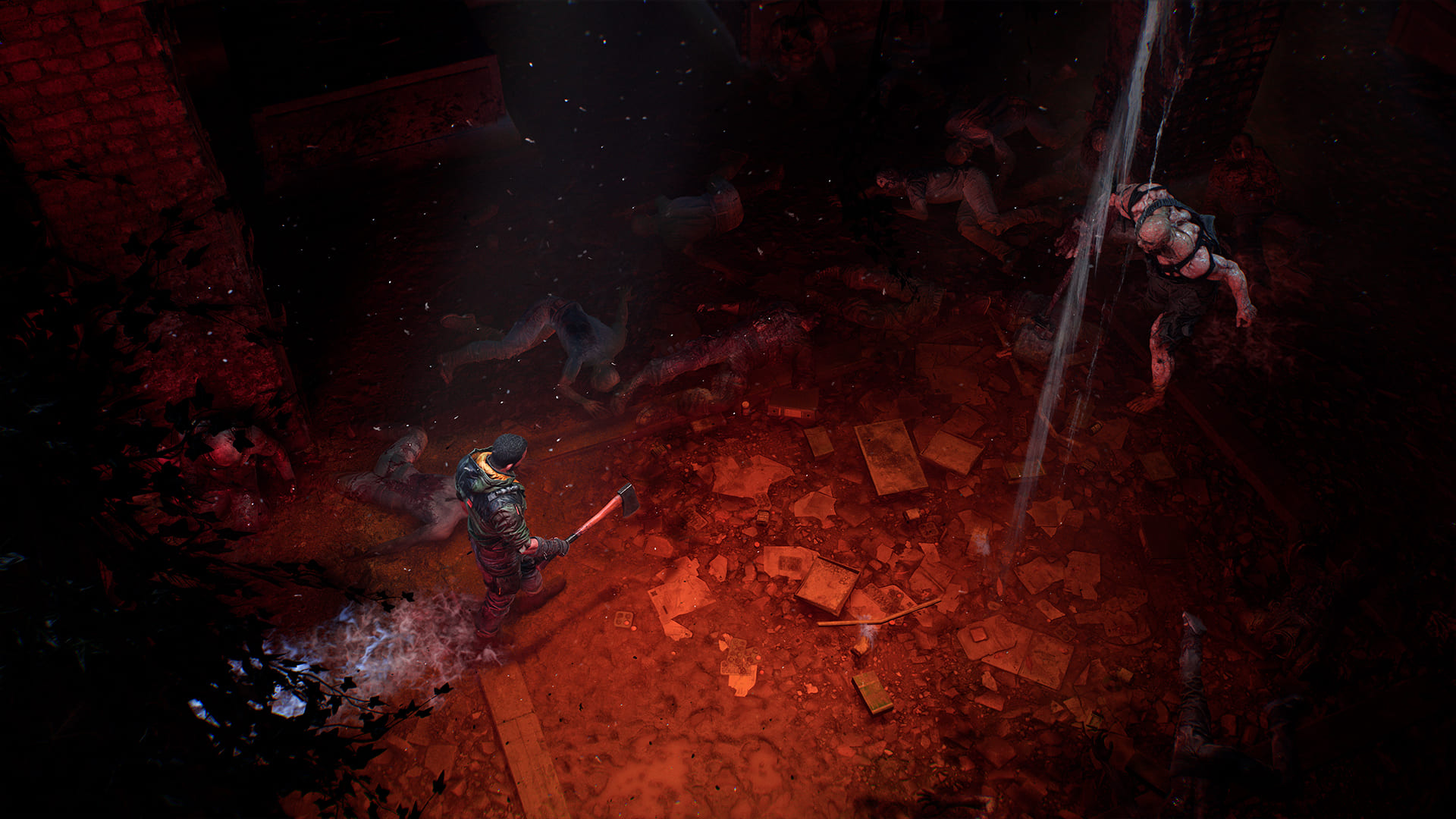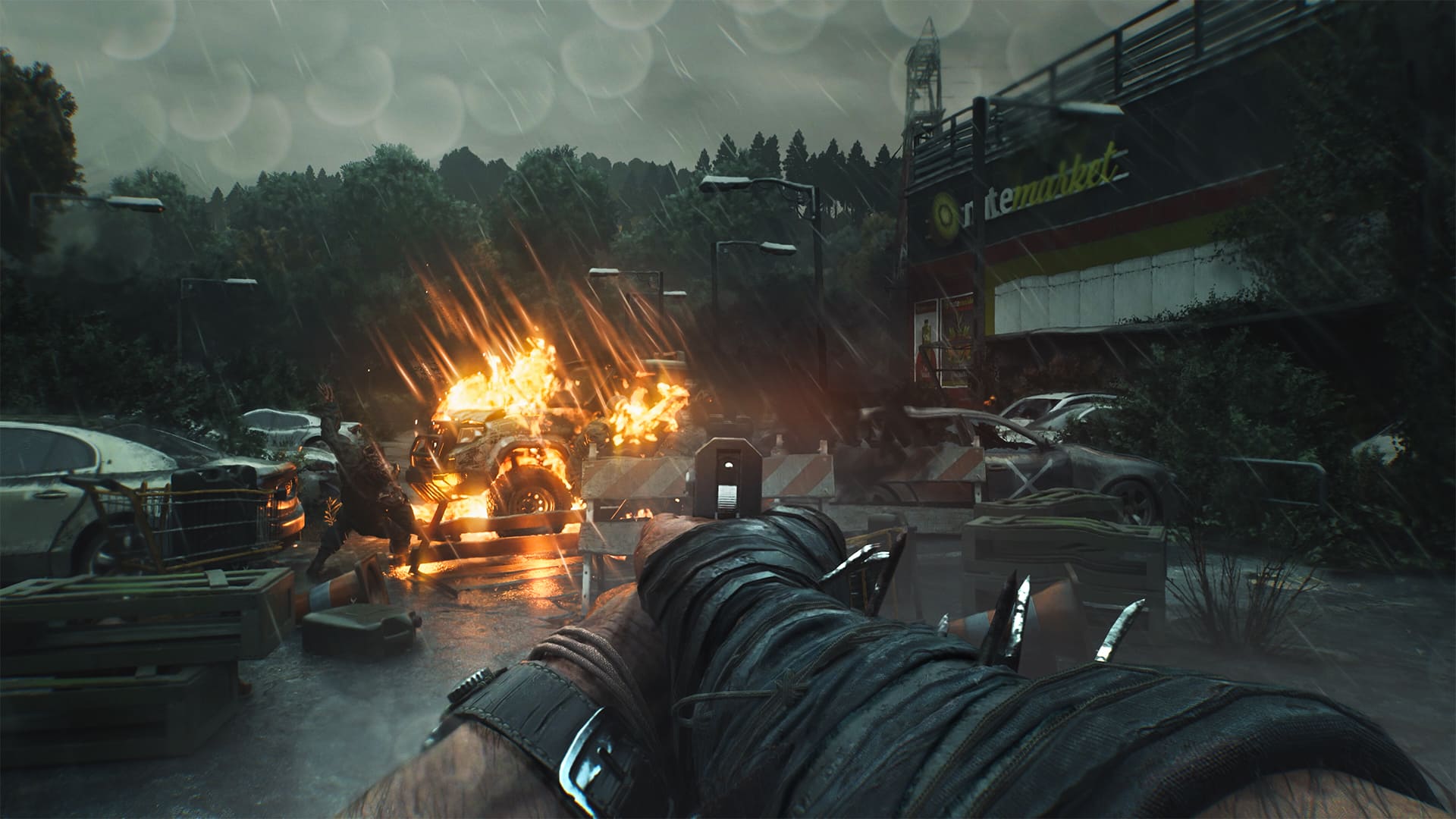.png)
10 Highlights That Make Dying Light: The Beast Unforgettable
Dying Light: The Beast is almost here and we can’t wait for you to finally get your hands on it. If you’re still wondering whether to dive in, here are 10 Highlights that make Dying Light: The Beast unforgettable reasons why this game deserves your attention.
1.KYLE CRANE IS BACK!
Let’s start with the big one… Kyle Crane is back! Whether you’ve followed his story since Harran or are meeting him for the first time, Dying Light: The Beast reintroduces this iconic survivor in a way that feels both familiar and brand new. After more than a decade in captivity and cruel experiments, Crane emerges scarred, altered, and carrying the weight of everything he’s lost. The world he steps into is as new and hostile to him as it will be to you
Gameplay reflects this evolution. Animations inspired by Dying Light 1 have been re-engineered to feel raw and unforgiving, contrasting the survival desperation of human Crane with the terrifying strength of his Beast form. Roger Craig Smith returns to deliver one of his most emotional performances yet, capturing not just rage and power, but also the exhaustion and trauma of a man who has been broken and rebuilt. And Crane’s design embodies his duality – half man, half monster. His corrupted eye, deep scars, and beastly traits are balanced with subtle details like Jade’s necklace, his old watch, and reminders of the survivor he once was.
And if you need to catch up on Crane’s journey so far - don’t worry. We’ve prepared a short recap that will get you ready to step into his shoes once again.
2. CASTOR WOODS – A BREATHTAKING NEW SETTING
The game, and its story, takes place in the valley of Castor Woods, a brand-new, handcrafted location built specifically for Dying Light: The Beast. Unlike the cityscapes of previous games, this environment is more natural and varied, designed to feel both expansive and intimate at the same time. Players will move between a tourist town, historic villas, thick forests, flooded farmland, swamps, and the remnants of an industrial park, each area offering its own identity and challenges
We wanted Castor Woods to feel like a place with real history. Tourism, local traditions, and industry once shaped the region, and traces of them are still present in the world today. Mountain lodges, ranger stations, worker housing, and family homes all tell fragments of stories that players can piece together as they explore. Even though the valley has fallen into decay, it was important for us to make it visually striking - a beautiful zombie apocalypse setting where every path or ruin hides something to uncover. From small collectibles and notes to larger secrets and easter eggs, Castor Woods rewards curiosity at every step
3. BRUTAL, PHYSICAL, AND UNFORGIVING COMBAT
Combat in Dying Light: The Beast has been rebuilt from the ground up to emphasize its physicality, brutality, and creativity. Every swing of a weapon, every punch, and every bullet is designed to feel impactful. Active ragdoll reactions, destructible body parts, and detailed wound systems make sure that what happens on screen looks and feels authentic. You’ll see enemies stagger, collapse, and break in ways that reflect the raw force behind each strike.
Enemies bring a level of challenge and intensity fitting a survival game. Humans use cover, flanking, and up to 22 tactical strategies to make fights unpredictable. Zombies, on the other hand, rely on sheer aggression, determined to grab you, reacting immediately to noise, relentlessly countering each attack.
To achieve the right level of realism, our team even used practical effects - like fake blood and staged splatter tests – as references for how wounds spread, how fluids react, and how surfaces stain. Unique finishers add cinematic, gory satisfaction, making combat as horrifying as it is thrilling. The result is gore that isn’t just shock value but grounded in tangible detail

4. HORRORS OF THE NIGHT
Night in Castor Woods is designed to bring back the scary feel of the first game, a true test of survival. Darkness is heavier, and the infected that roam it have evolved into smarter, faster, more menacing predators. Volatiles move in coordinated packs, adapting to your actions, and their new locomotion system makes them unstoppable whether you’re sprinting through the narrow streets of the tourist town or across the dense, shadowy forests of the Nature Reserve.
In the final weeks before production, a major focus was placed on refining Volatile behavior and locomotion to make night encounters more intense and believable. Their locomotion system was overhauled with tighter pathfinding and an improved set of run and jump animations, allowing them to close distances with far greater efficiency. We also worked on their sensory awareness, making them quicker to detect player actions, such as the flicker of a flashlight. These changes combine to create chases that are more varied, unpredictable, and terrifying than ever.
5. PARKOUR AND TRAVERSAL: GROUNDED AND REALISTIC
Parkour in Dying Light: The Beast has never felt more grounded or physical. Realistic physics make every jump, climb, and leap feel natural, giving players a sense of weight and momentum, while still allowing full freedom to explore. Castor Woods was designed as a parkour playground, and hundreds of new animations - including 17 just for climbing ledges - ensure that traversal feels dynamic and fresh. As Kyle adapts to his environment and embraces his evolving body, his agility grows, turning parkour not only into a survival tool and a means of escape, but also an expression of freedom.
Exploration isn’t limited to parkour alone. 4x4 off-road trucks expand the ways you can cross the valley, offering speed and power. But there are risks: noise attracts infected, fuel runs out, and damage taken builds until these cars explode. And when night falls, Volatiles make driving even more dangerous, tearing into vehicles with the same ferocity they unleash on players, turning every journey into a high-stakes gamble
6. ZOMBIES REAL LIKE NEVER BEFORE
Zombies in Dying Light: The Beast have been pushed further than ever, both in how they look and how they behave. Biters, Virals, and special infected retain faint traces of their humanity, making fights unsettling and unpredictable. With 110 visual variants and over a dozen detailed damage zones for each enemy type, every encounter feels unique and visceral. And Chimeras, the Baron’s twisted creations, blend human anatomy with monstrous design, creating truly terrifying opponents.
Zombies are aggressive, reactive, and smart. Virals are faster and smarter, using dodging and group coordination to overwhelm players. Volatiles pursue with relentless aggression, making escape a challenge in itself. Sound design reinforces this with over 2,500 unique vocalizations, giving each creature a raw, almost human intensity. Even subtle details, like a Biter reacting to losing a hand or gazing at the sunset, add layers of immersion.
From subtle gestures to hulking monstrosities, every infected in Castor Woods tells a story of who they once were, making each encounter tense, memorable, and unforgettable.
7. TOP-NOTCH IMMERSION
Dying Light games strive for total player immersion, and for Dying Light: The Beast we took a number of steps to deliver that.
We’ve created a dynamic sky where clouds drift naturally and the sun moves across the horizon, making sunsets feel vivid and alive. Our new fog and sky system is artist-driven: it’s grounded in physical equations, but the final look is fully shaped by our artists to ensure every scene has maximum visual impact.
Storms mix wind, rain, and lightning for dramatic, dynamic moments, and the effect of a rain-soaked atmosphere is quite spectacular - rain flows naturally over surfaces, forms mist, and creates walls of falling water. Swinging a weapon or an explosion from a grenade creates a wind gust that moves leaves, plants, and other objects. Even particle effects are context-sensitive; for example, leaves fall in forests, dragonflies fly around players near rivers, and airborne effects change depending on the surroundings.
Even our in-game map has been carefully crafted with immersion in mind. It’s 3D, fully animated, and layered with UI elements. Notice the little details – e.g., how it reacts to the weather: it shifts when the wind blows, raindrops fall on its surface, and at night, it can be illuminated by a flashlight. It’s a small detail, but it helps the map feel more connected to the game world and adds to the feeling of you being there.

8. CUTTING-EDGE TECH
With Dying Light: The Beast, we wanted the game to feel as good as it looks, which meant pushing both visuals and performance. Enhanced lighting and full HDR bring depth and realism to every environment, while advanced upscaling and frame generation technologies - Intel XeSS 2, NVIDIA DLSS 4, and FSR 4 - ensure smooth performance across a wide range of hardware. Latency reduction is also supported by all major providers, including AMD Anti-Lag 2, NVIDIA Reflex, and Intel XeLL, so responsiveness stays tight, even in the most chaotic encounters
9. MUSIC AND ATMOSPHERE THAT GRIP YOU
Sound design in Dying Light: The Beast plays a key role in building tension, especially at night. Players can track Volatiles and other infected through subtle audio cues – snapping branches in the forest, rattling windows in the town, or the heavy breath of something lurking close. We have recorded more than 9,000 unique soundbites for the zombies, more than in any of our previous games. On top of that, each biome carries its own acoustic identity, and the contrast between indoor and outdoor spaces amplifies suspense, turning even small noises into warnings of danger.
Music tells Kyle’s story: cold and quiet at first, reflecting his isolation, then gradually growing heroic and intense as he fights to protect Castor Woods. These dynamic transitions reflect Kyle’s state of mind, giving emotional weight to exploration, combat, and quiet moments alike.
10. SHARE THE CO-OP MOMENTS
Co-op in Dying Light: The Beast returns to the roots of the series, offering the full campaign to be played side by side. Each player keeps their own progress, while still being free to jump into a friend’s game, replay missions, and earn rewards for helping out. Dying Light: The Beast restores the freedom and spontaneity that made co-op a fan favorite - making survival more fun, unpredictable, and memorable when shared with friends.
See you in Castor Woods on September 18th!
